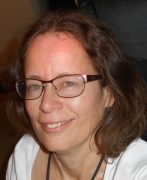How I Learned to Improve My Craft
 Everyone imagines sending their book off to an agent and magic happens. When I put my first finished novel in the mail, I thought it was going to be a best seller. Then I got form rejection after form rejection. I know now that a form rejection means the agents probably weren’t getting past the first sentence.
Everyone imagines sending their book off to an agent and magic happens. When I put my first finished novel in the mail, I thought it was going to be a best seller. Then I got form rejection after form rejection. I know now that a form rejection means the agents probably weren’t getting past the first sentence.
Back then, it was a frustrating experience. No one told me what exactly was wrong with my story. Even critique groups didn’t help. As I learned over time, it wasn’t a matter of simply finding the right sentences or picking the perfect words—there were craft skills I needed to learn.
A lot of skills.
But figuring what was challenging. The majority of craft books available are for a new writer into starting their first book. Many of them are not written by experienced writers. I looked at the biography of one and he’d never written fiction!
If only it were this easy…
- Story. Check.
- Setting. Check
- Characters. Check.
So I started with classes. It’s surprisingly hard to find good classes. Like the writer who had never written fiction, there are a lot of people out there unqualified for the subject they’re teaching.
I picked the cheap classes–$30-$50. It was easy for me to throw paint at the wall and try to take everything, especially because I was impatient. I thought I was ready NOW. All I needed to do was master this one skill (even though I didn’t know exactly what it was!).
Not only did I waste my money and time, I learned parts of writing that I later had to unlearn. Eventually I had to screen the classes and instructors:
- Had the instructor published more than one novel? One novel makes her still a beginner, and she won’t know how to teach other writers craft.
- How big is the class? If the class has thirty people in it, the instructor is probably not going to spend much time with the students.
- What did I need to learn?
That last question was huge.
What did I need to learn? I wanted to say “Everything!”
That impatience crept in again. It was hard watching other indie writers publishing stories, and I was stuck where I was.
Realistically I could only learn one skill at a time, particularly if I was getting in the deep end of learning it. It wasn’t like a school test where you get multiple choice. I needed time for what I learned to soak in and become a natural part of my writing.
But I did know the first skill I needed to work on: Getting ideas.
It was a safe skill for me, and an important one. I’d spent a lot of time on a first novel that I should have abandoned because I didn’t have any other ideas. I found a workshop by a best-selling writer who I had read and signed up.
Taking the time to find better classes turned out to be important step in the right direction. That idea class identified a second skill that I was really weak in—and I hadn’t known it. Frankly, I had to be hit over the head that I needed to work on this skill. More than once.
Patience marched in. I had to hunker down and write, practicing this one skill over and over. I had consciously do it at first because it was such an ingrained habit to ignore it. It was frustrating at times, too. I thought I would never be good at it!
But I was also listening to myself. One day, my creative brain was done with that skill. It wanted to learn something new. It wanted to play with new toys—er, skills.
So short stories became a great tool for working on many different skills in small doses.
And I studied, much like the artists who set up easels in the National Art Gallery and follow the brush strokes of Monet to discover new skills. I got books by best-selling writers like James Patterson, read the book to the end, then typed the first chapter. It was a very different experience than simply reading. I got down closer and more personally with the words, and I could see the brush strokes…how something was done.
And it was magic.
I don’t know if I’ll one day be a best selling writer. But I’m enjoying the journey. Each story is an opportunity to grow my skills, and go on a new adventure.
—
 Linda Maye Adams was probably the least likely person to be in the Army—even the Army thought so! She was an enlisted soldier and served for twelve years and was one of the women who deployed to Desert Storm. But she’d much prefer her adventures to be in books. She is the author of the military-based GALCOM Universe series, including the novels Crying Planet featured in the 2018 Military Science Fiction StoryBundle. Find out more about Linda Maye Adams on her website at http://www.lindamayeadams.com.
Linda Maye Adams was probably the least likely person to be in the Army—even the Army thought so! She was an enlisted soldier and served for twelve years and was one of the women who deployed to Desert Storm. But she’d much prefer her adventures to be in books. She is the author of the military-based GALCOM Universe series, including the novels Crying Planet featured in the 2018 Military Science Fiction StoryBundle. Find out more about Linda Maye Adams on her website at http://www.lindamayeadams.com.
Category: On Writing

























